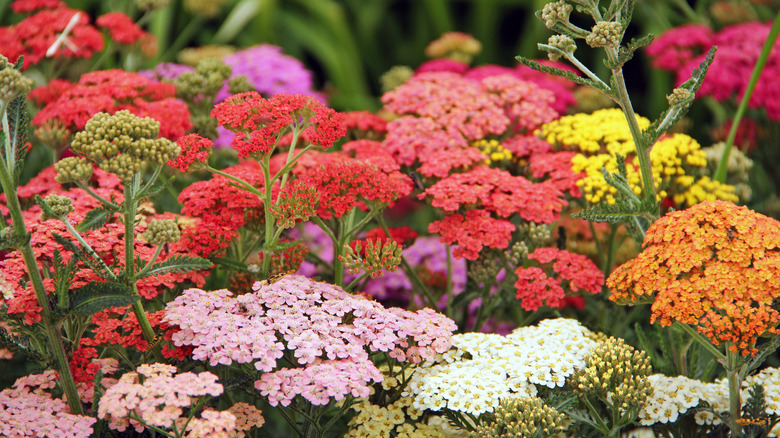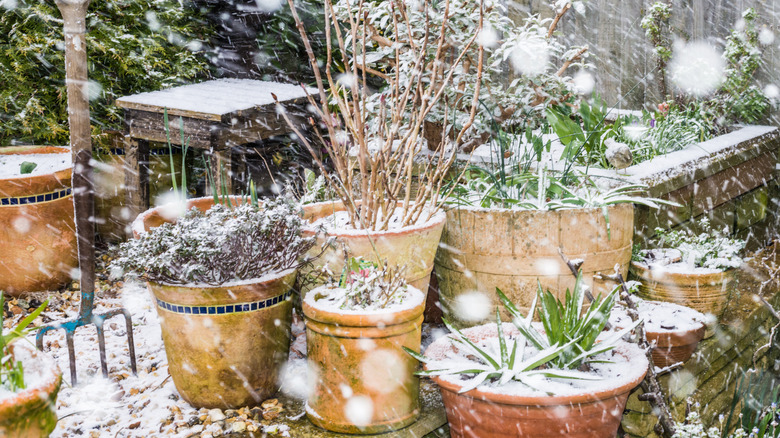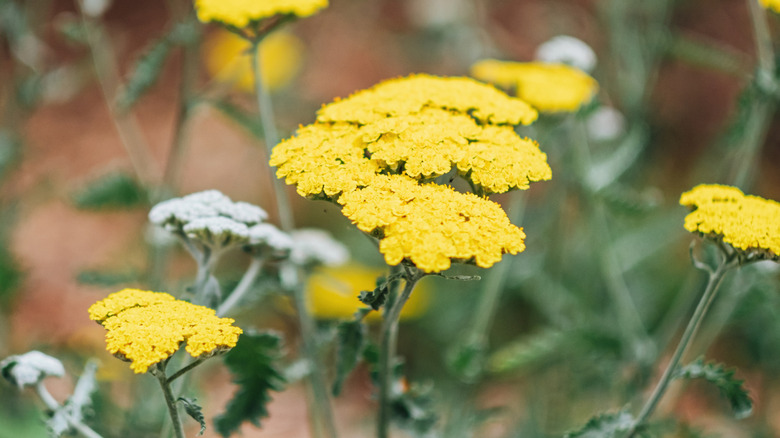Mistakes To Avoid When Growing Yarrow In Containers
Yarrow (Achillea millefolium) is a stunning plant thanks to its colorful blooms and fern-like leaves, and, even better, it's considered relatively easy to grow. Not only is it a joy to fill flower gardens with, but this wildflower is also a great addition to planters and container gardens. Despite its trouble-free reputation, yarrow is not without its occasional challenges, especially when it's being grown in containers. Some of the biggest mistakes that people make when growing yarrow in containers include not considering their growing zone, not overwintering their containers correctly, using a potting mix that doesn't drain well, and not giving the plant enough sun.
Yarrow is native to North America, as well as Europe and parts of Asia. Because it doesn't always bloom well its first year when grown from seed, it's important to make sure your yarrow plants survive the winter, so you can enjoy their blooms in the following years. Yarrow is hardy in zones 3 through 9 when it's grown in ground, but don't make the mistake of assuming that the same zones apply to potted plants. Growing zones can work a bit differently when plants are overwintered in containers, especially smaller containers. Because potted plants' roots are exposed to cold air from all sides, it's best to assume that plants grown in a container are two growing zones less hardy than they would be if grown in the ground. This means that yarrow is really only hardy down to zone 5 when it's in a planter, and it may not survive if left outside all winter in colder zones.
Don't leave your yarrow unprotected in the winter
Apart from getting the hardiness zones right before overwintering your yarrow, you must also grow the plant in the right type of container. It's generally best to overwinter plants in larger containers, so they aren't as impacted by temperature fluctuations. If possible, use wood or concrete planters, since they're the least likely to be damaged by winter weather. Conversely, ceramic containers may shatter in the middle of winter. To be safe, it's best to either wrap them to provide extra protection, or, if possible, move them to a more protected area, like a garage or porch, during the winter months. You could even follow Martha Stewart's tip for overwintering potted plants and move your yarrow to a protected hoop house.
To give your yarrow the best chance for surviving the winter without issues, make sure it has had plenty of time to get established in its planter before cold weather arrives. Don't make the error of transplanting or dividing it any later than September. Yarrow often stays green through winter despite being dormant, providing you with a nice pop of color during the chilly months.
Avoid shady spots and soggy soil for the best yarrow blooms
When growing and taking care of yarrow in a container, it's essential to make sure it has proper drainage. This means ensuring there are drainage holes on the bottom of your planter and using a potting mix that is well-draining. While it may be tempting to use some soil from your garden to fill up the planter, garden dirt isn't a good option for plants growing in containers. A mix comprised of coir, perlite, and compost will work well.
Yarrow thrives in locations with full sun — that's at least six hours of direct sunlight daily. The plant tends to become leggy and disease prone if you grow it in too much shade. Fortunately, one of the best things about container gardening is that it is relatively easy to relocate your plants if they aren't in the best location. If your yarrow seems to be struggling, try moving your planter to a sunnier spot in your yard.


